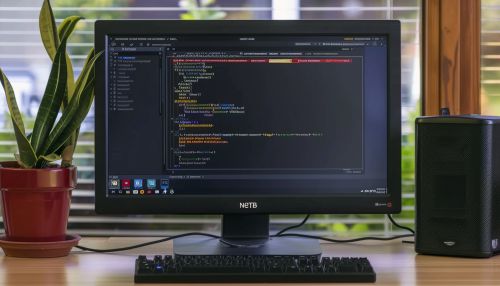NetBSD
History
NetBSD is a free and open-source Unix-like operating system derived from the Berkeley Software Distribution (BSD). It was first released in 1993 and has since evolved into a highly portable and versatile operating system. The project was initiated by Chris Demetriou, Theo de Raadt, Adam Glass, and Charles Hannum, who were dissatisfied with the direction of 386BSD and sought to create a more robust and portable system.
The name "NetBSD" reflects the project's emphasis on networking capabilities and its origins in the BSD family. The initial release, NetBSD 0.8, was based on 386BSD 0.1 and incorporated various improvements and bug fixes. Subsequent releases have continued to enhance the system's performance, security, and portability.
Design and Architecture
NetBSD's design philosophy emphasizes portability, modularity, and clean code. The system is known for its highly portable codebase, which allows it to run on a wide variety of hardware platforms, including x86, ARM, MIPS, PowerPC, SPARC, and many others. This portability is achieved through the use of a machine-independent kernel and a well-defined hardware abstraction layer.
The NetBSD kernel is monolithic, meaning that it runs as a single large process in a single address space. This design allows for efficient communication between different parts of the kernel but requires careful management of resources to ensure stability and performance. The kernel provides a wide range of services, including process management, memory management, file systems, and networking.
NetBSD's modularity is another key aspect of its design. The system is composed of a core set of components, with additional functionality provided by loadable kernel modules and user-space programs. This modularity allows users to customize their systems to meet specific needs and makes it easier to develop and maintain the system.
Features
NetBSD offers a wide range of features that make it a versatile and powerful operating system. Some of the key features include:
- **Portability**: NetBSD is renowned for its portability, with support for over 50 hardware platforms. This makes it an ideal choice for embedded systems, servers, and workstations.
- **Networking**: NetBSD includes a comprehensive set of networking tools and protocols, including support for IPv6, IPsec, and various routing protocols. The system also includes a powerful packet filter (PF) for firewall and traffic shaping.
- **Security**: NetBSD places a strong emphasis on security, with features such as kernel-level access control lists (ACLs), secure levels, and support for various cryptographic algorithms. The system also includes a built-in intrusion detection system (IDS) and tools for managing security policies.
- **File Systems**: NetBSD supports a wide range of file systems, including traditional Unix file systems (UFS, FFS), network file systems (NFS), and modern file systems such as ZFS. The system also includes support for disk encryption and file system snapshots.
- **Package Management**: NetBSD uses the pkgsrc package management system, which provides a consistent and flexible way to install and manage software packages. Pkgsrc supports a wide range of software, including popular open-source applications and libraries.
- **Virtualization**: NetBSD includes support for various virtualization technologies, including Xen and QEMU. This allows users to run multiple operating systems on a single physical machine, providing a flexible and efficient way to manage resources.


Development and Community
NetBSD is developed by a global community of volunteers, coordinated by the NetBSD Foundation. The foundation provides infrastructure and support for the project, including hosting services, legal representation, and financial management. The development process is open and transparent, with contributions welcomed from anyone who wishes to participate.
The NetBSD source code is managed using the CVS version control system, with changes reviewed and approved by a core team of developers. The project follows a regular release cycle, with major releases occurring approximately every two years. Each release is supported for a period of at least two years, with security updates and bug fixes provided as needed.
NetBSD has a strong focus on code quality and maintainability, with an emphasis on clean, well-documented code. The project includes a comprehensive test suite, which is used to ensure that changes do not introduce regressions or other issues. The system is also subject to regular security audits, with vulnerabilities promptly addressed and patched.
Use Cases
NetBSD's versatility and portability make it suitable for a wide range of use cases. Some of the most common applications include:
- **Embedded Systems**: NetBSD's lightweight design and support for a wide range of hardware platforms make it an ideal choice for embedded systems. The system is used in a variety of devices, including routers, firewalls, and industrial control systems.
- **Servers**: NetBSD's robust networking and security features make it well-suited for server environments. The system is used to host web servers, mail servers, file servers, and other network services.
- **Workstations**: NetBSD can be used as a desktop operating system, with support for modern hardware and a wide range of applications. The system includes a variety of desktop environments, including Xfce, GNOME, and KDE.
- **Research and Education**: NetBSD's open and transparent development process, combined with its emphasis on code quality and maintainability, make it a valuable resource for researchers and educators. The system is used in a variety of academic and research institutions for teaching and experimentation.
Comparison with Other BSD Systems
NetBSD is one of several operating systems derived from the original BSD codebase. Other notable BSD systems include FreeBSD, OpenBSD, and DragonFly BSD. While all of these systems share a common heritage, they have different design goals and areas of focus.
- **FreeBSD**: FreeBSD is known for its performance and scalability, making it a popular choice for server environments. The system includes a wide range of features, including advanced networking and storage capabilities. FreeBSD also has a strong focus on binary compatibility, with support for running applications from other Unix-like systems.
- **OpenBSD**: OpenBSD is renowned for its security and code correctness. The system includes a variety of security features, such as mandatory access controls (MAC), secure memory management, and a built-in firewall. OpenBSD also has a strong emphasis on code auditing and documentation.
- **DragonFly BSD**: DragonFly BSD is focused on performance and scalability, with a particular emphasis on multi-processor systems. The system includes a unique file system called HAMMER, which provides advanced features such as snapshots and data deduplication. DragonFly BSD also includes a lightweight virtualization system called vkernel.
Future Directions
The NetBSD project continues to evolve, with ongoing development focused on improving performance, security, and portability. Some of the key areas of focus for future development include:
- **Hardware Support**: NetBSD aims to continue expanding its support for new and emerging hardware platforms. This includes adding support for new processors, peripherals, and other devices.
- **Performance Enhancements**: The project is committed to improving the performance of the system, with a focus on optimizing the kernel and user-space programs. This includes work on improving multi-processor scalability, reducing latency, and enhancing I/O performance.
- **Security Improvements**: NetBSD will continue to enhance its security features, with a focus on proactive measures to prevent vulnerabilities and attacks. This includes work on improving access controls, memory protection, and cryptographic algorithms.
- **User Experience**: The project aims to improve the overall user experience, with a focus on making the system easier to install, configure, and use. This includes work on improving documentation, developing user-friendly tools, and enhancing desktop environments.
